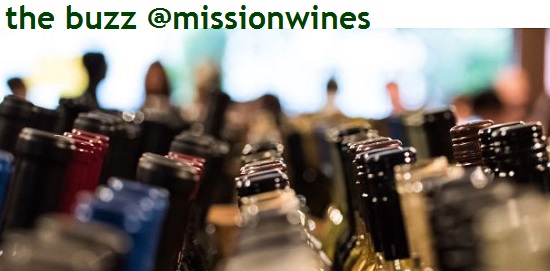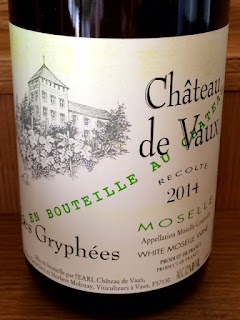I first encountered the pimiento de padron (padron pepper) during my eight month stay in Spain in 2003 while visiting dear friends in Gallicia, the northwestermost province of Spain where the pepper originates. Here, the local Gallegos serve it typically as a simple tapa, fried in olive oil and sprinkled with coarse salt. While most of these delicious little green peppers are mild, about one in ten can be very, very, bring-tears-to-your-eyes spicy, hence the name "padron" which means "godfather" in Spanish, a reference to the one spicy one as "the godfather" of the batch. The spiciness of the pepper is influenced by different variables, including the amount of rain and sun it received while growing.
The local opinions differ on how to determine which are spicy and which are not--along with other lore related to what is means if you're the one that gets the hot one (Gallegos are very superstitious)--but I have yet to confirm a reliable technique for pre-determining spiciness. A similar variety of this pepper, the shisito, is cultivated in East Asia and looks and behaves the same. Both are in season now, and both make a delicious and exciting addition to your summer table. I will say that out of all the jalapenos and serranos and other spicy American peppers I've eaten as a native Californian raised on Mexican food, one of the spiciest I've ever had by far was a padron, so be forewarned!
The local opinions differ on how to determine which are spicy and which are not--along with other lore related to what is means if you're the one that gets the hot one (Gallegos are very superstitious)--but I have yet to confirm a reliable technique for pre-determining spiciness. A similar variety of this pepper, the shisito, is cultivated in East Asia and looks and behaves the same. Both are in season now, and both make a delicious and exciting addition to your summer table. I will say that out of all the jalapenos and serranos and other spicy American peppers I've eaten as a native Californian raised on Mexican food, one of the spiciest I've ever had by far was a padron, so be forewarned!
Whether you've grabbed a bag of padron peppers or shisitos from the market to prepare tonight or soon, you don't need to do much: just sautee over high heat, sprinkle with salt and voila! It will take more effort to choose the wine, since there are certain factors to consider when pairing wine with green peppers that may deliver quite a bit of heat. A succulent, fruity wine with body to balance this pepper's sweetly herbal flavor and potential for spice is best.
A wine pairing rule of thumb I endorse is this: if the ingredient comes from a place with an ancient wine tradition, look to the region for guidance on the wine pairing. In cool-climate Gallicia, white wine is king, and many traditional options will suit a dish of padron peppers well, cooling and refreshing the palate between bites. Look for varietals like Albarino or Godello or white blends from this part of Spain. I'd avoid red wine altogether, but if you desire a red, choose a light, fruity red with moderate to low tannin, like reds made from the Gallician Mencia grape, or a French Gamay. Other international white varieties, like a fruity Sauvignon Blanc, dry to off-dry Riesling or Chenin Blanc should do the trick. And don't forget the many white varietals and blends from nearby Portugual, which borders Galicia to the south. You can't go wrong with the slightly effervescent, off-dry whites from Vinho Verde with this dish, especially if you're eating and drinking during the day. Generally lower in alcohol, a classic Vinho Verde is a must for daytime entertaining!
A wine pairing rule of thumb I endorse is this: if the ingredient comes from a place with an ancient wine tradition, look to the region for guidance on the wine pairing. In cool-climate Gallicia, white wine is king, and many traditional options will suit a dish of padron peppers well, cooling and refreshing the palate between bites. Look for varietals like Albarino or Godello or white blends from this part of Spain. I'd avoid red wine altogether, but if you desire a red, choose a light, fruity red with moderate to low tannin, like reds made from the Gallician Mencia grape, or a French Gamay. Other international white varieties, like a fruity Sauvignon Blanc, dry to off-dry Riesling or Chenin Blanc should do the trick. And don't forget the many white varietals and blends from nearby Portugual, which borders Galicia to the south. You can't go wrong with the slightly effervescent, off-dry whites from Vinho Verde with this dish, especially if you're eating and drinking during the day. Generally lower in alcohol, a classic Vinho Verde is a must for daytime entertaining!
My top choice for pairing with a plate of padron or shisito peppers right now does in fact hail from Vinho Verde, but is a step up in quality and complexity than your standard porch-pounder. Quinto da Raza is located in the Vinho Verde appellation and produces several wines including your traditional, fizzy Vinho Verde which I adore, but I am even more enamored of their single vineyard, single varietal, Dom Diogo Arinto. Classified as Vinho Verde, this is unlike any Vinho Verde I've ever. Round and succulent, this has barely a whisper of effervescence--it's basically still, if you ask me--with juicy melon and citrus aromas and flavors. Contrary to the current trend, this not a super dry, racy white, which I appreciate in the context of heat. Still, it possesses the perfect balance of minerality and acidity to keep its ripe fruit in check and is great match not only for these piquant peppers, but a whole range of foods, from shellfish to chorizo. It is sure is delicious on its own, too.
I recently served this wine with a plate of padron peppers on a very hot evening that followed a very hot day in Pasadena, and it paired magically, especially with the spicy ones! Soon thereafter, I ordered a plate of shisitos at trendy Redbird in DTLA, and while the skin contact Slovenian white I chose sufficed, I sure wish I had this little Arinto instead. Highly recommended!
I recently served this wine with a plate of padron peppers on a very hot evening that followed a very hot day in Pasadena, and it paired magically, especially with the spicy ones! Soon thereafter, I ordered a plate of shisitos at trendy Redbird in DTLA, and while the skin contact Slovenian white I chose sufficed, I sure wish I had this little Arinto instead. Highly recommended!
Cheers,
-Chiara Shannon
In stock now:
100% Arinto. Located inland in the verdant Vinho Verde region, Quinta da Raza is the
home and life of Jose Diogo and Mafalda Teixeira Coelho. Quinta da Raza
has a unique terroir created by the gentle slopes and magnificent
exposure to the sun. The soil benefits from its granite origins with
areas of schist and clay. It has a microclimate created by the mountains
in the west and the valley of the Tamega river which prevents the
influence of the Atlantic winds. The valley creates a shelter resulting
in less rain and a greater temperature range. The vineyards are subject
to more sun than perhaps other vineyards in the Vinho Verde Region,
which are important factors for the development of the vines. Moreover,
the average altitude of Quinta da Raza is 820 feet, which corresponds to
the best average altitude suited for growing grapes. In 1999 / 2000,
significant improvements were introduced in the cellar, including new
oenological and storage equipment. Incidentally, the bird which appears
on the Raza label is the Lesser Kestrel, locally called "Peneireiro“.
(Importer)






